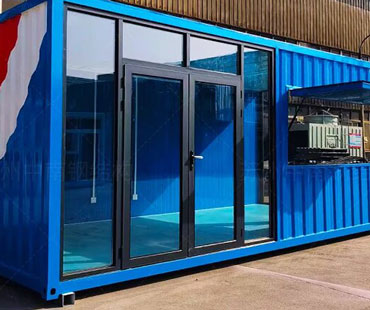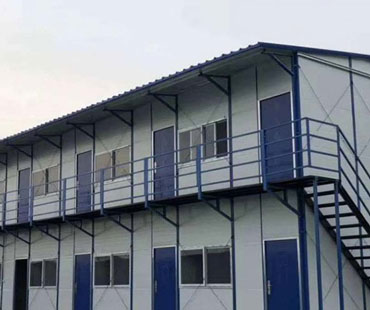In recent decades, China has solidified its position as a global leader in maritime trade, with its container ports playing a pivotal role in the country’s economic development. The remarkable growth of container port throughput reflects not only China’s robust manufacturing sector but also its strategic initiatives in logistics and infrastructure development. However, alongside this growth, the country faces several challenges that could impact the future efficiency and sustainability of its container ports.
China's container ports have witnessed exponential growth since the late 20th century. According to statistics from the Ministry of Transport, the total container throughput of Chinese ports surpassed 250 million TEUs (twenty-foot equivalent units) in 2020, positioning China as the world’s largest container port operator. Major ports such as Shanghai, Ningbo, and Shenzhen have consistently ranked among the busiest ports globally, handling vast amounts of cargo that facilitate international trade.
Several factors have contributed to this growth:
1.Economic Reforms and Open Policies: The economic reforms initiated in the late 1970s propelled China's integration into the global economy. The establishment of Special Economic Zones (SEZs) and free trade zones facilitated trade and investment, leading to increased import and export activities.
2.Infrastructure Development: The Chinese government has heavily invested in port infrastructure, enhancing capacity and efficiency. Modern container terminals equipped with advanced technologies, such as automated cranes and real-time tracking systems, have significantly improved handling capabilities.
3.Belt and Road Initiative: Launched in 2013, the Belt and Road Initiative (BRI) aims to improve global trade connectivity. This ambitious plan has led to the development of new trade routes and increased investment in port facilities, further boosting container throughput.
4.Growing Domestic Market: China’s expanding middle class and the rise of e-commerce have spurred domestic demand for goods, resulting in higher import volumes and increased container traffic through ports.

Challenges Facing Container Port Throughput
Despite the impressive growth in container throughput, Chinese ports face several challenges that could hinder their continued success:
1.Congestion and Capacity Constraints: As container volumes increase, many ports struggle with congestion. High traffic can lead to delays in unloading and loading cargo, impacting overall efficiency. Ports like Shanghai have experienced bottlenecks, particularly during peak seasons, which can disrupt supply chains.
2.Environmental Concerns: The environmental impact of port operations, including air and noise pollution, has become a growing concern. As China emphasizes sustainable development, ports must adopt greener practices, such as using cleaner fuels and implementing stricter emission standards.
3.Technological Adaptation: While many Chinese ports have incorporated advanced technologies, there is an ongoing need for further innovation. Embracing automation, artificial intelligence, and big data analytics can enhance operational efficiency but requires significant investment and training.
4.Global Trade Uncertainties: Geopolitical tensions and trade disputes, particularly with major partners like the United States, pose risks to China's trade volume. Fluctuations in global demand can directly affect container throughput, leading to unpredictable challenges for port authorities.
5.Labor Issues: As ports increasingly automate operations, there is a growing concern about job displacement for dockworkers and related personnel. Balancing technological advancement with workforce stability is critical for sustaining the labor market in the maritime industry.
Strategic Solutions for Future Growth
To address these challenges, several strategic solutions can be implemented:
1.Enhancing Infrastructure: Continued investment in port infrastructure is essential to accommodate growing container volumes. Expanding terminal capacity, improving logistics networks, and upgrading transportation links can enhance overall efficiency.
2.Implementing Smart Port Technologies: Embracing smart technologies, such as the Internet of Things (IoT) and blockchain, can optimize port operations. These technologies can improve tracking, reduce paperwork, and streamline customs processes.
3.Fostering Environmental Sustainability: Developing and implementing environmentally friendly practices is crucial for the sustainable growth of container ports. Investments in renewable energy sources, waste management, and green shipping initiatives can mitigate environmental impacts.
4.Strengthening International Collaboration: Building partnerships with international ports and shipping companies can enhance operational synergies and share best practices. Collaborative efforts can lead to improved service levels and greater resilience in the face of global uncertainties.
5.Workforce Development: Investing in workforce training and development is vital to equip workers with the skills needed in an increasingly automated environment. Providing educational programs that focus on technology and logistics management can help ensure a smooth transition for the labor force.
The growth of container port throughput in China is a testament to the country’s dynamic economic development and strategic positioning in global trade. However, to sustain this growth, it is imperative to address the challenges that accompany it. By investing in infrastructure, adopting innovative technologies, and prioritizing sustainability, Chinese ports can continue tolead the world in container throughput while also paving the way for a more resilient and environmentally responsible future.


